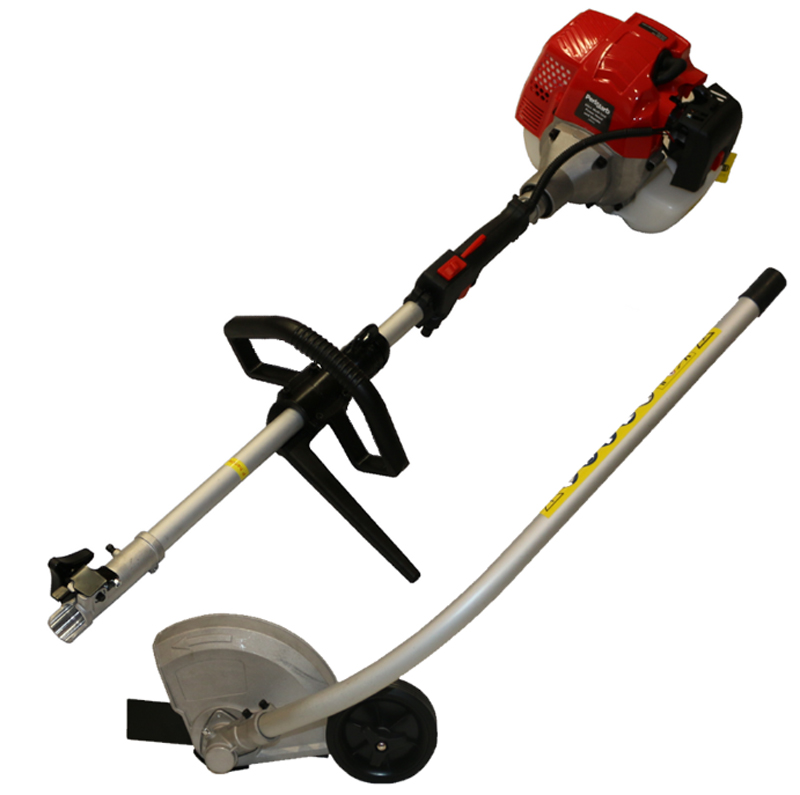
Brush cutters are a popular tool for keeping your lawn and garden looking neat, but they can be tricky to maintain. A single rock or branch can easily damage the blade, leaving you scrambling for replacements.
Proper care is essential to keep your brush cutter running smoothly and efficiently. Read on to discover our top tips for maintaining your whipper snipper like a pro.
Â
Brush Cutter Maintenance Checklist
Regular maintenance is key to ensuring your whipper snipper runs efficiently. Each task should be done regularly, and sometimes replacement parts are unavoidable.
Some parts need daily attention, while others require weekly or monthly checks. Knowing what to look for will help you avoid costly repairs down the line.
Â
Daily Maintenance
Air filters, trimmer heads, blades, and guards need regular attention. Replace your air filter every 25 hours of use or when it becomes too dirty to function properly.
Dull or damaged blades not only reduce performance but also cause excessive vibration. Always inspect your blade before use for cracks or signs of wear.
Check the trimmer head for any signs of damage as well. While guards typically last a long time, they're there for your safety, so replace them if needed.
Â
Weekly Maintenance
Once a week, clean the spark plug, cooling fins, and carburetor. Change the oil every 50 hours or once per season, depending on usage. Lubricate moving parts every 25 hours to prevent corrosion and damage.
To clean the spark plug, remove each one and check its condition. Replace any that show signs of wear or damage.
Â
Monthly Maintenance
Once a month, perform a full maintenance routine. Clean all parts, including the fuel tank, fan, and carburetor. The fuel filter should be replaced after 100 hours of use to prevent clogging.
Â
How to Replace Brush Cutter Blades
Blades are crucial for your brush cutter's performance. If they're worn out, your machine won't work as intended. Here’s how to replace them:
- Turn off the engine and disconnect the spark plug
- Remove the trimmer head
- Unscrew the locking nut holding the blade in place
- Install the new blade
- Reattach the locking nut and trimmer head
Â
Choosing the Right Blade Type
There are three main types of brush cutter blades, each suited for different tasks.
Chisel blades are ideal for cutting through thick brush and small trees, but they can be expensive and require more power.
Mulching blades are less common and designed for mulching leaves, making them harder to find.
Knife blades are the most common type and suitable for general use. They’re cost-effective but can dull quickly if they hit rocks or hard objects.
Â
Best Practices for Brush Cutter Storage
Proper storage helps extend the life of your brush cutter. Follow these tips for optimal results:
- Store your brush cutter in a cool, dark place away from direct sunlight
- Use a protective cover to keep dust and moisture at bay
- Keep the machine upright to prevent fuel leaks
- Drain the fuel tank if storing for an extended period
Invest in a proper cover for your brush cutter. It will offer better protection than a simple tarp or blanket.
Â
How to Troubleshoot Common Brush Cutter Problems
Even the best brush cutter can have issues. Common problems include difficulty starting, poor performance, and uneven cutting.
If your cutter won’t start, try checking the fuel, spark plug, and air filter. Replace old fuel if it has been sitting for a while.
Poor performance is often due to a worn blade. Check the edge of the blade if your brush cutter is struggling to cut properly.
Uneven cutting is usually caused by a bent or damaged blade. Replace it if necessary to ensure smooth operation.
Â
How to Maintain the Brush Cutter Engine
Regular maintenance keeps your brush cutter running smoothly and prevents costly repairs. Focus on the spark plugs, fuel intake, oil, and air and fuel filters.
Replace spark plugs if they're dirty or damaged, and clean or adjust the carburetor regularly to ensure the engine runs efficiently.
Â
Oil Changes
Change the oil regularly to keep the engine free from contaminants. Most manufacturers recommend changing the oil every 50 hours of use.
Â
Air Filter Replacement
A dirty air filter can reduce engine performance and increase fuel consumption. Check it regularly, especially if the engine isn't running smoothly.
Â
Brush Cutter Safety Tips
Using and maintaining a brush cutter can be dangerous if proper precautions aren’t taken. Here are some important safety tips:
- Wear protective gear, including eye and ear protection, closed-toe shoes, and long pants
- Keep people away from the work area
- Avoid using the brush cutter near flammable materials
- Never operate a damaged or faulty brush cutter
- Turn off the engine and disconnect the spark plug before performing maintenance
Â
Get Quality Brushcutter Parts at Jono & Johno!
Keeping your brush cutter in good working condition requires the right parts. At Jono and Johno, we provide chainsaw chains, bars, and spare parts across Australia. Click here to browse our selection today.
Â
spare parts for sealer, parts for FISCHBEIN, parts for heat sealer
GUANGZHOU TUSEN MACHINERY & EQUIPMENT CO., LTD , https://www.gztusen.com